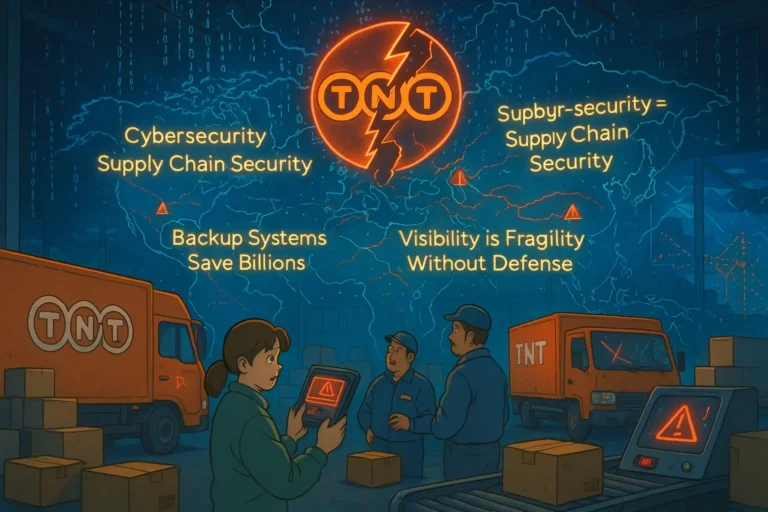
The modern supply chain is certainly built on technology, but that doesn’t mean humans are no longer necessary.
In fact, some schools of thought believe humans play a bigger role than ever in the history of supply chain management.
However, despite their importance, any investment in one will often lead to a reduced investment in the other, which sparks the need for a balance.
In this article, we will examine how to strike the right balance between technology and human labour in your supply chain management.
How does Technology Improve Supply Chain Management?
There is a reason modern technology is infinitely more optimized than its predecessor, and a lot of it is thanks to optimization.
1. Simplifies Supply Chain Operations
When done by humans, repetitive tasks are frequently time-consuming and prone to mistakes. However, this is where technology shines.
Technology can carry out these tasks quickly and accurately while saving significant time for the supply chain.
Some of these activities include order processing, sorting, picking, and vendor management.
2. Improves decision-making in the supply chain
With technology, you may quickly analyze massive volumes of data to uncover insightful patterns. This makes making decisions based on solid evidence easier.
It can also enhance business plans and performance, ultimately ensuring supply chain visibility.
AI-driven data analysis can provide a major competitive edge by forecasting consumer behaviour and spotting operational inefficiencies.
3. Improves productivity and collaboration throughout the supply chain
Technology has the potential to improve productivity and collaboration by streamlining
internal and external operations.
Tech solutions like AI and blockchain can decrease bottlenecks and speed up reaction times, enhancing communication and team cohesion.
It is a great way to drive supply chain agility.
4. Reduces the cost of the supply chain
Human errors leading to rework or returns from customers can cost the supply chain anywhere from 5% to 30% increased costs.
By automating and simplifying supply chain processes, technology can drastically reduce human errors, saving the supply chain a ton of money.
Technology also helps reduce human errors, cost of supply chain, productivity, and customer satisfaction.
Why is the Human Workforce Still Necessary to Supply Chain Management
Although technology has tremendous benefits, the supply chain still needs the human touch. Here is why.
1. Setting the scene and recognizing nuances in the supply chain
Although businesses and supply chains have a standard operating procedure, there are still nuances and varying contexts that technology might struggle with.
Humans, on the other hand, excel at it. By interpreting these nuances, we can make decisions based on our awareness of cultural and social nuances and unclear data.
2. Ensuring the ethical use of automation and AI
Technology poses ethical problems that need human discernment. This includes but is not limited to concerns about privacy, algorithmic prejudice, and the effect on staff employment.
These technologies are employed ethically in accordance with society’s standards and company values, thanks to human monitoring.
3. Tracking results and determining areas for development
Implementing technology is great, but how can you determine its results?
Short answer: You need the human factor.
Humans also understand the broader supply chain objectives and are instrumental in directing the use of technology to achieve these goals.
Human oversight is essential to assess the effectiveness of technology, pinpoint problematic areas, and enhance deployed tech tools.
4. Drive Innovation
Technology may encourage innovation, but it is humans who drive it. Every supply chain still needs the human element to unite and drum up strategic ways to get ahead of the competition.
As much help as technology is, we haven’t gotten to that point yet. Maybe sometime in the future, when AI reaches its full potential, but for now, humans drive innovation.
How To Balance The Human Workforce and Technology in Your Supply Chain Management
We have established that humans and tech matter as much as the other in the modern supply chain. However, finding the right balance can be helpful to your supply chain management.
Here is a guide on how to achieve that.
1. Identifying tasks suited for each party
As great as technology is, it cannot do everything in the supply chain and as versatile as humans are, they do not need to do everything in the supply chain.
This means it is important for you to identify tasks and operations in your supply chain best suited to either party.
For example, conveyor belts aid the movement of goods in the warehouse, but it is humans who determine where each goods in the supply chain is placed.
When identifying tasks for either party, start by determining the tasks in the supply chain that can be automated. Another example is payment processing for vendors.
Determining these tasks can take a thorough examination of the entire supply chain process, but it is always worth it.
2. Train and equip your staff to handle technology
Technology is a great tool, but as they say, it is only as good as the user.
If your staff do not know how to use available tech solutions and tools, it will only frustrate your supply chain and, in many cases, lead to downtimes in the supply chain.
To avoid these, invest in training or hiring the right personnel for your supply chain. Equip them with the standard practices and explain to them how the new tech can improve their work.
Training your staff can improve supply chain performance by as much as 20%. The same applies to training them on new technology.
3. Establish clear roles and responsibilities for humans and technology
Ensure there are clearly stated roles and responsibilities for humans and technology throughout the supply chain.
If the roles are not assigned clearly, it can lead to confusion and a breakdown in productivity for both parties. It could also lead to the mistakes and inefficiency you were trying to avoid.
Clarifying the roles between each of them promotes easy collaboration between the two. It also fosters integration and smooth operational flow.
4. Implementing monitoring and evaluation process
The effectiveness of automation and AI methods must be regularly audited and assessed to gauge performance and identify where improvement is needed.
To achieve success with technology, it is important to ensure its use is aligned with the supply chain objectives.
Set KPIs for adapted technology to help you evaluate its effectiveness and overall performance.
Encourage open communication and feedback from staff on how the technology impacts their job and if necessary changes or improvements are needed.
Challenges to Look Out for When Balancing Humans and Technology in the Supply Chain
It is human nature to resist or refuse the change whenever there is a change. However, in this lies the beauty of change.
There will be challenges when balancing humans and technology in the supply chain.
1. Fear of job loss
Your employees will naturally fear the loss of their jobs because they think the AI will replace them. This is where you help them understand the benefits.
Training plays an important role here because it allows the team to transition to more tech-friendly roles, fostering growth and productivity in the supply chain.
2. Managing expectations and misconceptions
As much as there are people who fear job loss, there are also those who expect too much from technology. It is important to create a nice balance between these two parties.
Again, this is another reason to train them on what to expect and how to make the most of the implemented technology.
3. Adapting to evolving trends
If there is one thing we know about technology, it is that it is always improving. This means constant change, which can be very expensive.
Before implementing new tech, always ensure it is the right fit, and it is necessary for your supply chain.
FAQs on Balancing Technology and Human Workforce in the Supply Chain
Q1: Why is it essential to strike a balance between human and technological components in the supply chain?
Both must be balanced to achieve effectiveness, precision, and adaptability. Although technology can speed up procedures, human skill is still necessary for making decisions and handling exceptions.
Q2: What are the dangers of relying too heavily on technology in the supply chain?
Overreliance may result in data breaches, system malfunctions, or the inability to respond appropriately to unanticipated events. Additionally, it may reduce interpersonal communication, which may harm partnerships.
Q3: How can human decision-making in supply chain management work in conjunction with technology?
Humans are better at complicated data analysis, making decisions in hazy situations, and adapting to shifting market dynamics, improving technology-driven systems’ efficiency.
Conclusion
Balancing your supply chain’s human workforce and technology is vital for success.
While technology streamlines operations and boosts efficiency, humans provide the adaptability and nuanced decision-making that machines can’t match.
Striking the right balance is key to a thriving supply chain.

Obinabo Tochukwu Tabansi is a supply chain digital writer (Content writer & Ghostwriter) helping professionals and business owners across Africa learn from real-world supply chain wins and setbacks and apply proven strategies to their own operations. He also crafts social content for logistics and supply chain companies, turning their solutions and insights into engaging posts that drive visibility and trust.







